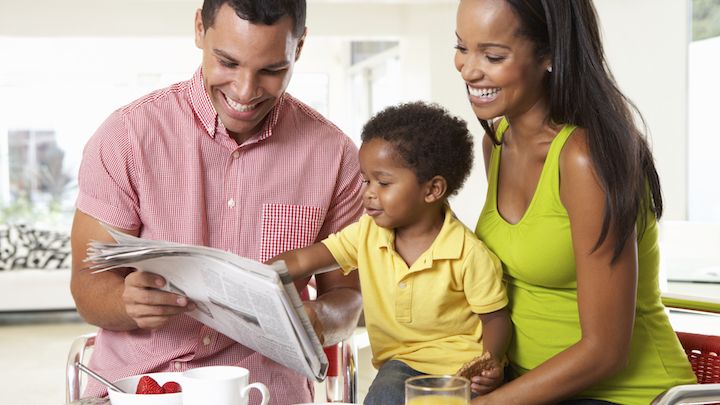When kids sit next to a caring adult and hear engaging stories, they develop positive associations with books. Reading aloud to your child strengthens the part of their brain associated with visual imagery, the ability to understand stories and word meaning. When you read to your two-year-old, they pick up on important book smarts, like how to hold a book and which direction to turn the pages. These skills are called “concepts about print,” and they help kids prepare to be successful independent readers.
Start Early
Reading to young children helps build bonds, vocabulary and habits. If reading a story is part of the bedtime routine from infancy or toddlerhood, your child will likely become even more invested than you are in maintaining the tradition. Keep at least one small basket of books at kid level — and expect them to get chewed on, stepped on, spilled on and adored!
Read the Pictures
Illustrations can help kids build their vocabulary and start to understand emotions. When a sad, happy, angry or surprising event occurs, pause to look at the characters’ facial expressions. Ask, “How do you think she’s feeling right now?” Authors who are particularly skilled at portraying emotions in both words and pictures include Kevin Henkes, Patricia Polacco, Arnold Lobel and Mo Willems
Give Kids a “Part”
Predictable books follow a pattern — such as repeated lines or obvious sequences (days of the week, letters or numbers). Young kids love “Brown Bear, Brown Bear, What Do You See?” and, more recently, the Pete the Cat series, because they can quickly anticipate what comes next and can become involved in the reading experience. Once children pick up on the pattern, prompt them to recite key lines or complete a sentence that you start. Nursery rhymes and rhyming books, such as “The Cat in the Hat” or “Chicka Chicka Boom Boom,” also help to get children involved in the story.


